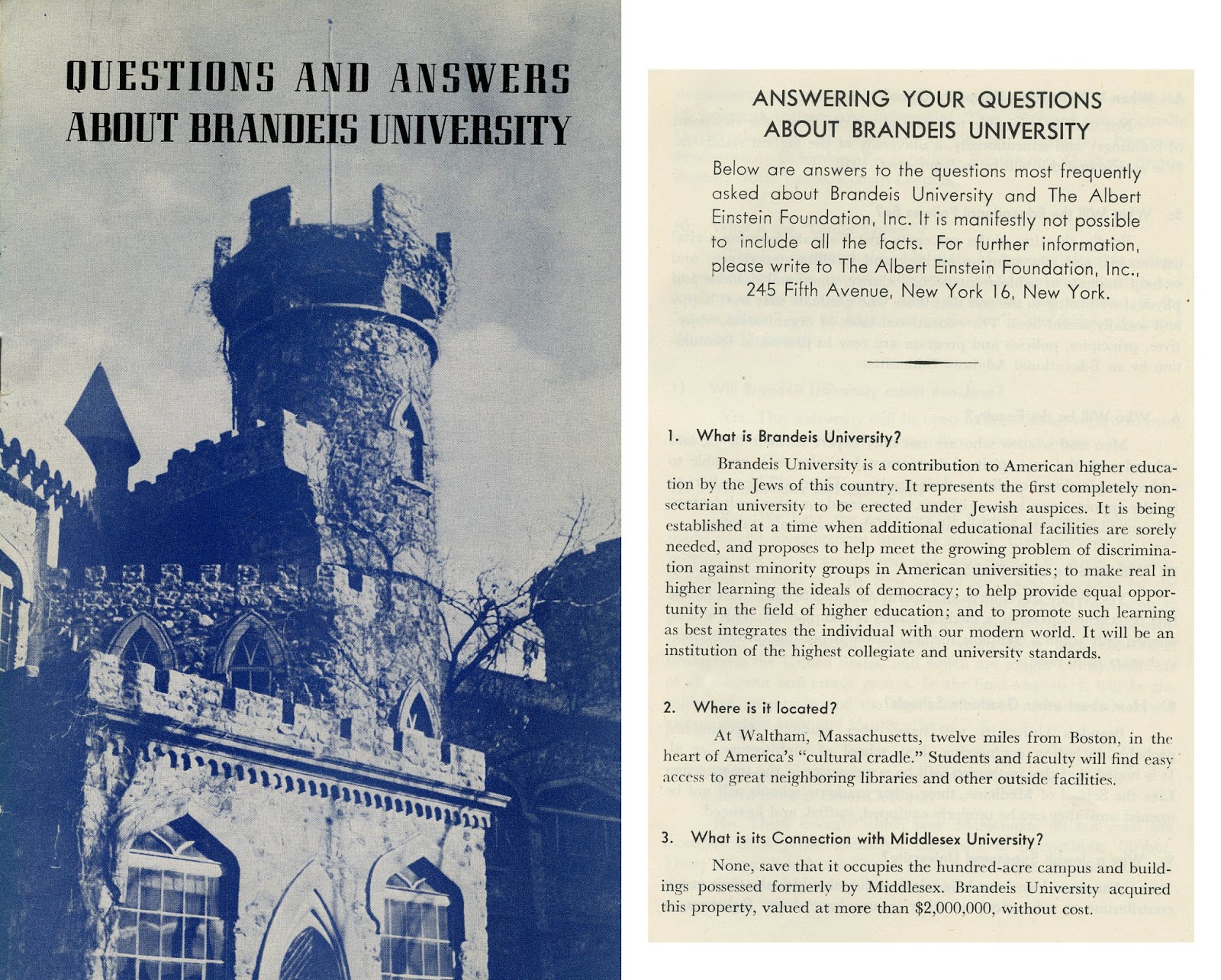Early Documents of the Formation of Brandeis University
July 28, 2015
Written by Renee Walsh, graduate student at the Library and Information Science Program at Simmons College
 Scroll of Signatures to Establish Middlesex University, 1937, Middlesex University Collection
Scroll of Signatures to Establish Middlesex University, 1937, Middlesex University Collection
The Brandeis University archives hold many documents which illustrate the activities surrounding the founding of the institution in 1947. Brandeis University opened on the grounds of the former Middlesex University, which built its Waltham campus in 1928. Due to a lack of AMA accreditation for its Medical program and enrollment numbers during World War II, the school became fiscally untenable. Middlesex University enrolled many Jewish students and was both racially and religiously diverse. Many people at the time attributed the lack of AMA accreditation for its medical program to Anti-Semitism, because other AMA accredited university programs had admissions quotas to limit the number of enrolled Jewish students.
 Albert Einstein Foundation Brochure, c.a. 1947, University History Collection
Albert Einstein Foundation Brochure, c.a. 1947, University History Collection
In 1946, the Albert Einstein Foundation for Higher Learning, Inc. was established in order to raise funds for the founding of a “university without quotas…where no barriers exist because of race, sex, color, or creed.” This university was to be, “a Jewish contribution to American education” and “a great school where democracy is enhanced through its practice.”
The foundation subsequently purchased the 100 acre Waltham campus, and the name of Middlesex University was changed to Brandeis University on March 13th, 1947, and the charter to grant degrees was transferred.
 Questions and Answers About Brandeis Brochure c.a. 1948, Office of Admissions Collection
Questions and Answers About Brandeis Brochure c.a. 1948, Office of Admissions Collection
Brandeis University was set to welcome its first class in the Fall of 1948. Brochures were sent out by the Albert Einstein Foundation such as “Questions and Answers about Brandeis University” and “This is Brandeis,” which outlined the objectives of the new institution.
According to the “Questions and Answers” brochure, the University, “is being established at a time when additional educational facilities are sorely needed, and proposes to help meet the growing problem of discrimination against minority groups in American universities.”
 Class of 1952 Application Form Letter, Office of Admissions Collection
Class of 1952 Application Form Letter, Office of Admissions Collection
The application letter sent out to prospective applicants for the Class of 1952 noted that the university is, “co-educational, non-sectarian, and will be ‘quota-free.’” Furthermore, the application letter states that, “no applicant will ever be asked to identify his religion or color because to do so would violate a fundamental principle of Brandeis University.”
These materials, which are available in the University Archives, are a reminder of the context in which the university was founded. Furthermore, these documents are testament to the University’s mission of diversity and inclusivity from its founding.